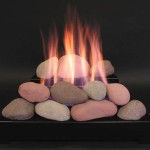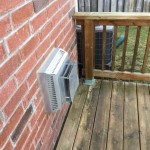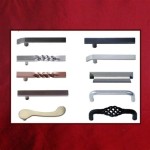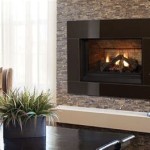Woodstoves and Fireplaces: A Comprehensive Overview
Woodstoves and fireplaces represent enduring methods of heating homes and creating ambiance. Both offer unique benefits and drawbacks, making the selection process dependent on individual needs, preferences, and budgetary constraints. This article provides a detailed examination of woodstoves and fireplaces, exploring their functionalities, fuel considerations, maintenance requirements, and environmental impacts.
Understanding Woodstoves
Woodstoves are self-contained heating appliances designed to burn wood as fuel. Typically constructed from cast iron or steel, they are characterized by an enclosed firebox, a chimney or flue for exhaust venting, and often, a system for controlling airflow. The primary function of a woodstove is to radiate heat directly into the surrounding space, providing a concentrated and efficient heating source.
Modern woodstoves have undergone significant technological advancements, particularly in combustion technology. Older models often suffered from incomplete combustion, resulting in high levels of smoke and pollutants. Contemporary woodstoves, however, frequently incorporate designs that promote secondary combustion. This involves re-burning the unburned gases and particulate matter that would otherwise escape up the chimney, increasing efficiency and reducing emissions. Features like catalytic combustors or non-catalytic designs with intricate baffle systems are common in newer models.
The efficiency of a woodstove is measured by its ability to convert the energy stored in the wood into usable heat. Efficient woodstoves can achieve efficiency ratings of 70% or higher, meaning that a substantial portion of the wood's energy is effectively used to heat the home. This is significantly higher than traditional open fireplaces, which often lose a large percentage of their heat up the chimney.
Choosing a woodstove involves consideration of several factors. The size of the space to be heated is paramount; woodstoves are rated by their heating capacity, typically expressed in BTUs (British Thermal Units). Selecting a stove that is appropriately sized for the area prevents overheating or underheating. Other considerations include the stove's burn time, the size of the firebox, and the ease of loading and cleaning. Furthermore, adherence to local building codes and installation requirements is essential for safety and compliance.
Exploring the Features of Fireplaces
Fireplaces, in contrast to woodstoves, are typically built into the structure of a home. They consist of a firebox, a chimney for venting exhaust, and a hearth that provides a non-combustible surface in front of the opening. Fireplaces are valued for their aesthetic appeal, creating a focal point in a room and providing a sense of warmth and ambiance. However, their heating efficiency is often significantly lower than that of woodstoves.
Traditional open fireplaces are notoriously inefficient. A large portion of the heat generated escapes up the chimney, while cold air is drawn into the room to replace the lost warm air. This process can actually result in a net loss of heat in the home, as the fireplace draws more heat out of the room than it contributes.
To improve the efficiency of fireplaces, various modifications and accessories have been developed. Fireplace inserts are self-contained units that are installed within an existing fireplace opening. These inserts typically feature a closed firebox, improved combustion technology, and a blower fan to circulate heat into the room. Fireplace inserts can significantly increase the heating efficiency of a fireplace, approaching the efficiency levels of some woodstoves.
Another option is the use of glass doors. These doors help to reduce the amount of air that is drawn up the chimney, preventing heat loss. Glass doors can also improve safety by containing sparks and embers. However, even with glass doors, a fireplace remains less efficient than a woodstove due to the inherent design limitations of an open combustion chamber.
The aesthetic aspect of fireplaces remains a primary consideration for many homeowners. Fireplaces can be customized with a wide range of materials and designs to complement the style of the home. Common materials include brick, stone, tile, and wood. The design of the mantel and surrounding area can also be tailored to create a unique and visually appealing focal point.
Fuel Considerations and Environmental Impact
Both woodstoves and fireplaces rely on wood as their primary fuel source. The type and quality of wood used can significantly impact the efficiency, emissions, and overall performance of the appliance. It is crucial to use seasoned, dry wood to ensure optimal combustion.
Seasoning wood involves allowing it to dry for a period of several months or even years. This reduces the moisture content of the wood, which in turn improves its burning characteristics. Dry wood burns hotter and cleaner, producing less smoke and creosote buildup in the chimney. Creosote is a flammable substance that can accumulate in the chimney and pose a fire hazard.
Hardwoods, such as oak, maple, and ash, are generally preferred for burning in woodstoves and fireplaces. Hardwoods have a higher density than softwoods, meaning they contain more energy per volume. This results in longer burn times and more heat output. Softwoods, such as pine and fir, burn more quickly and produce more smoke.
The environmental impact of burning wood is a complex issue. Wood burning can contribute to air pollution, particularly in areas with high concentrations of wood-burning appliances. The smoke from wood fires contains particulate matter, carbon monoxide, and other pollutants that can have adverse health effects. However, when wood is burned in efficient appliances and properly seasoned wood is used, the emissions can be significantly reduced.
Sustainable forestry practices can also mitigate the environmental impact of wood burning. Harvesting wood from sustainably managed forests ensures that the resource is replenished and that the ecosystem is protected. Additionally, using wood as a fuel source can be considered carbon neutral if the wood is sourced from forests that are actively growing and absorbing carbon dioxide from the atmosphere. The carbon released during combustion is offset by the carbon absorbed by the trees during their growth.
Government regulations and incentives play a role in promoting cleaner wood-burning practices. The Environmental Protection Agency (EPA) has established emission standards for woodstoves, requiring manufacturers to produce appliances that meet certain performance criteria. Tax credits and rebates may also be available to encourage homeowners to purchase efficient woodstoves and fireplace inserts.
Maintenance and Safety
Regular maintenance is essential for ensuring the safe and efficient operation of woodstoves and fireplaces. This includes cleaning the chimney, inspecting the appliance for damage, and following proper operating procedures. Neglecting maintenance can lead to a variety of problems, including chimney fires, carbon monoxide poisoning, and reduced heating efficiency.
Chimney cleaning is a critical aspect of maintenance. Creosote buildup in the chimney can ignite and cause a dangerous chimney fire. It is recommended to have the chimney professionally cleaned at least once a year, or more frequently if the appliance is used extensively. A qualified chimney sweep can inspect the chimney for damage and remove any accumulated creosote.
Regularly inspecting the woodstove or fireplace for cracks, leaks, or other damage is also important. Damaged components can compromise the safety and efficiency of the appliance. Any necessary repairs should be performed promptly by a qualified technician.
Proper operating procedures are essential for preventing accidents and ensuring efficient combustion. This includes using the correct type of wood, controlling airflow, and avoiding overloading the firebox. Never use flammable liquids to start a fire, and always keep a fire extinguisher nearby.
Carbon monoxide (CO) is a colorless, odorless gas that can be produced by incomplete combustion. CO poisoning can be deadly. It is crucial to install carbon monoxide detectors in the home and to ensure that they are functioning properly. Symptoms of CO poisoning include headache, dizziness, nausea, and fatigue. If you suspect CO poisoning, evacuate the home immediately and seek medical attention.
Safe storage of firewood is also important. Firewood should be stored in a dry, well-ventilated area away from the house. Piling firewood against the house can create a fire hazard and provide a habitat for pests. It is also important to keep the area around the woodstove or fireplace clear of combustible materials.
In conclusion, the selection and utilization of woodstoves and fireplaces involves a multifaceted consideration of efficiency, environmental impact, maintenance, and safety. A thorough understanding of these elements is crucial for homeowners seeking to effectively and responsibly use these traditional heating methods.

What Is A Freestanding Wood Stove Fireplace Service Experts

Wood Stoves Vs Fireplaces Burning Hearth S

Freestanding Wood Burning Stoves Sierra Hearth And Home

What Are The Benefits Of A Wood Stove Versus Traditional Fireplace

Wood Burning Stove We Love Fire

Stoves Wood Gas Pellet Lopi

Wood Stoves Woodstoves Fireplaces

Efficient Wood Burning Stoves Fireplaces Efficiency Vermont

Home Woodstoves Fireplace Patio

Ping For Fireplaces And Wood Stoves The New York Times








